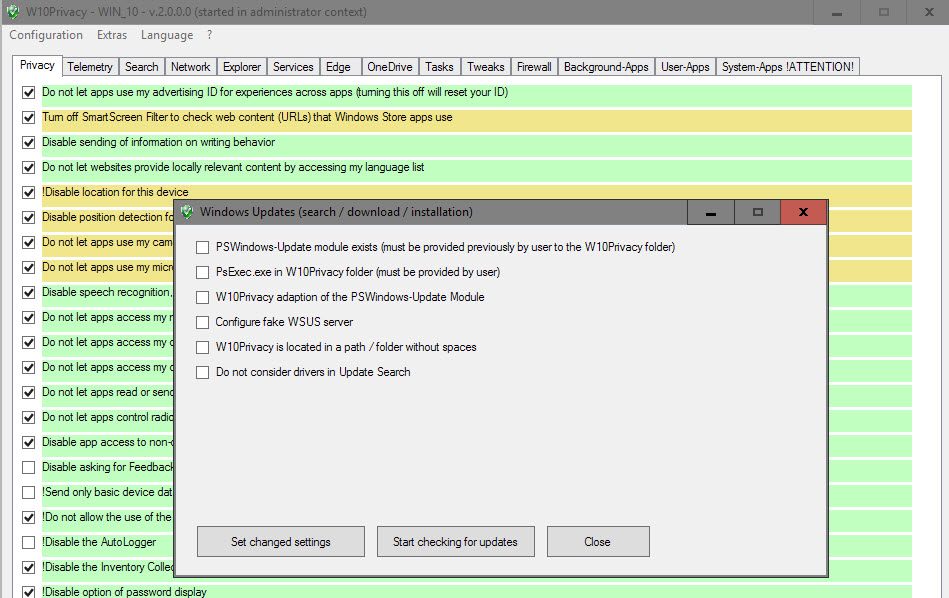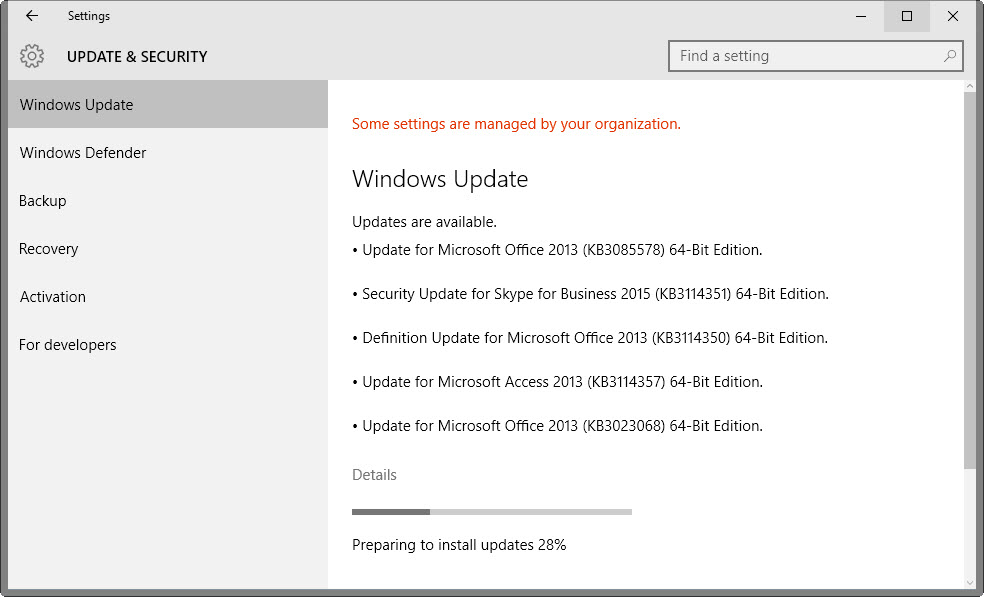Control Windows Updates with W10Privacy Tool
The recent update of the privacy tool W10Privacy to version 2.0 introduced a new feature to the software program that lets you control the update functionality of the Windows operating system through the application.
We reviewed W10Privacy as part of our guide to Windows 10 Privacy tools, and covered one of the recent updates of it which brought additional privacy options to Windows 10.
The major new feature of W10Privacy 2.0 is that you can have the software disable the operating system's own update mechanism and replace it by its own.
The idea behind the feature is to give users full control over updates by listing all available updates first and allowing you to pick the ones you want installed on the computer.
Control Windows Updates

The new feature is integrated into W10Privacy but requires third-party code that needs to be downloaded separately.
To get it working, do the following:
- Download the latest version of W10Privacy from the official website. Make sure that it is at least version 2.0 of the software.
- Unpack the archive to the local system.
- Download the Windows Update PowerShell Module from Technet, and unpack the contents of it to the W10Privacy folder (so that it is listed as a subfolder there).
- Right-click on W10Privacy.exe afterwards and select "run as administrator" from the context menu to run it.
The Windows Update module
You find the new module listed under Extras > Windows Updates. None of the six options are enabled by default. Here is a quick rundown of all six options since it is not always clear what these options do.
- PSWindows-Update module exists (must be provided previously by user to the W10Privacy folder) - The program copies the contents of the PSWindowsUpdate folder to C:\Windows\System32\WindowsPowerShell\v1.0\Modules\PSWindowsUpdate when the option is checked which is a requirement to run the PowerShell script. The folder in System32 is deleted again if you uncheck the option.
- PsExec.exe in W10Privacy folder (must be provided by user) - Highlights whether the program PsExec.exe is in the W10Privacy folder. If the option is checked, it is available, and if it is not, you need to download it and add it to the folder
- W10Privacy adaption of the PSWindows-Update Module - It is necessary to modify the PowerShell scripts for use in W10Privacy which this option does.
- Configure fake WSUS server - This sets a fake (read non-working) WSUS server on the system. Doing so prevents the operating system from using Windows Updates to find, download and install updates. The correct server is enabled again if you uncheck the option.
- W10Privacy is located in a path / folder without spaces - Shows whether the program is stored in a folder without spaces.
All five options are requirements for using W10Privacy to replace the operating system's update functionality with its own.
The sixth option is completely optional:
- Do not consider drivers in Update Search - If you enable it, driver updates won't be included during update searches.
Note: The program creates a System Restore point on start. You may want to create a full system backup as well just to be on the safe side considering that core features of Windows are manipulated by the software.
A click on the "start checking for updates" button runs a scan for updates once all five boxes have been checked on the configuration screen.
W10Privacy displays a list of updates that are not yet installed after the scan. Each update is listed with its KB id, size, and its title. There is also a checkbox in front of every update that you use to select those that you want installed on the computer system.
You may use buttons at the bottom of the page to check or uncheck all, and to being download and installation of the selected updates.

Closing Words
The new update feature improves W10Privacy, but this initial version is not intended for everyone just yet as it changes a core system feature and replaces it with its own version.
This means that you have to run the tool regularly, and its update check, to make sure you don't miss any update.
I cannot stress the importance of creating a backup enough, so here it is again: backup before you use the tool.
This article was first seen on ComTek's "TekBits" Technology News

- Log in to post comments